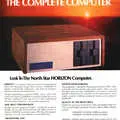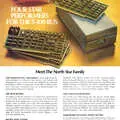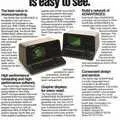
North Star Advert - November 1977
From Byte - The Small Systems Journal
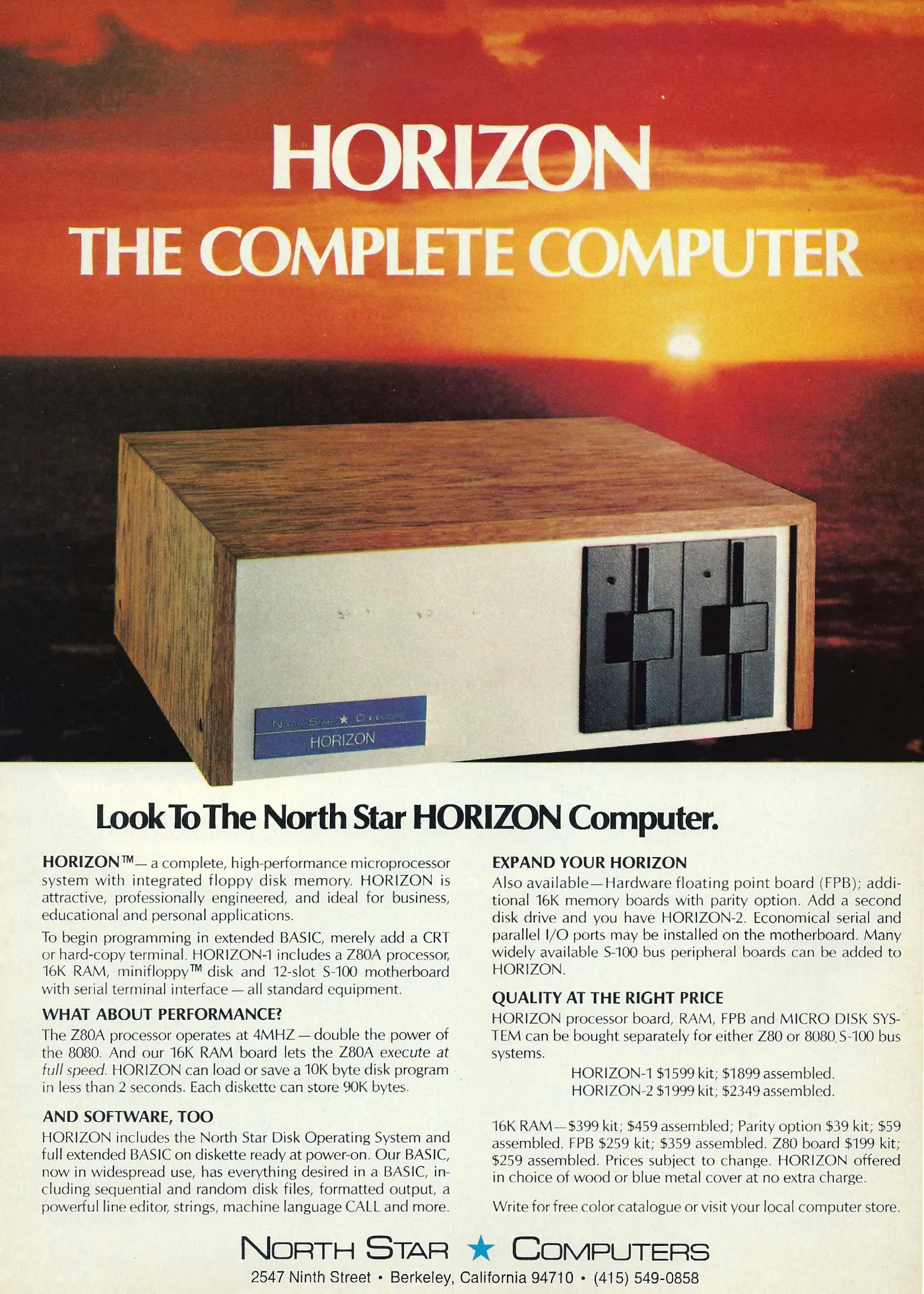
Horizon - The complete computer. Look to the North Star Horizon
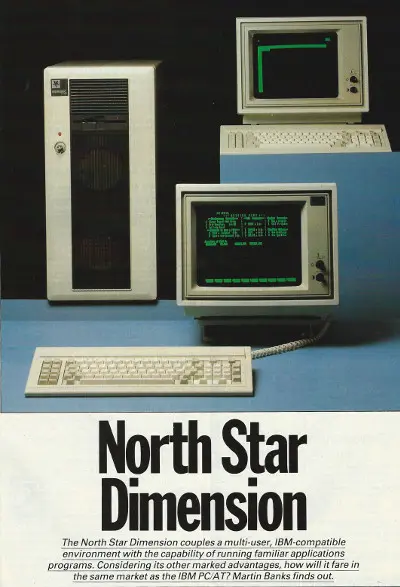
photo from a review of the North Star Dimension in Personal Computer World, © Personal Computer World March 1985The North Star Horizon might be filed under the "who or what?" category of computers, however judging by the regularity of the company's adverts in magazines of the day it was around for quite a while - from 1977 until at least 1985.
That would make North Star one of only a handful of companies to successfully make the transition from the world of first-generation micros of the 1970s to the new world order of the 80s.
The longevity of the company also meant that it actually became something of a standard in its own right, as later machines such as 1982's Decision 1 from Morrow Designs, or Hotel Microsytems' Minstrel from 1983, had "North Star compatibility" as a feature.
In Morrow's case this was because North Star Computers itself had formed after a 1976 project between George Morrow of Morrow Designs, Bill Godbout, Chuck Grant, and Mark Greenberg to build a 16-bit microcomputer based upon National Semiconductors' PACE CPU had failed due to differences of opinion.
After the colloboration collapsed, the latter two - Grant and Greenberg - left to form North Star, clearly on amicable-enough terms that Morrow would later give a nod to North Star in his later microcomputers.
The new North Star company initially sold IMSAI's 8080 by mail order, before creating its own S-100 floppy-disk system and then moving into building its own complete S-100-based systems[1], with the first being the Horizon, launched in 1977.
This computer, which ran a Z80 CPU (it was also available with an Intel 8080) on an S-100 bus with either CP/M or the company's own NSDOS operating system, looks more like a piece of furniture, with its plywood top and sides.
It retailed at $1899 (about £13,500 in 2025 terms) which put it way above the cost of a PET or even an Apple II, both of which launched in this year. However, it apparently found a niche in universities, due to its S-100 bus and therefore the large number of interface cards available.
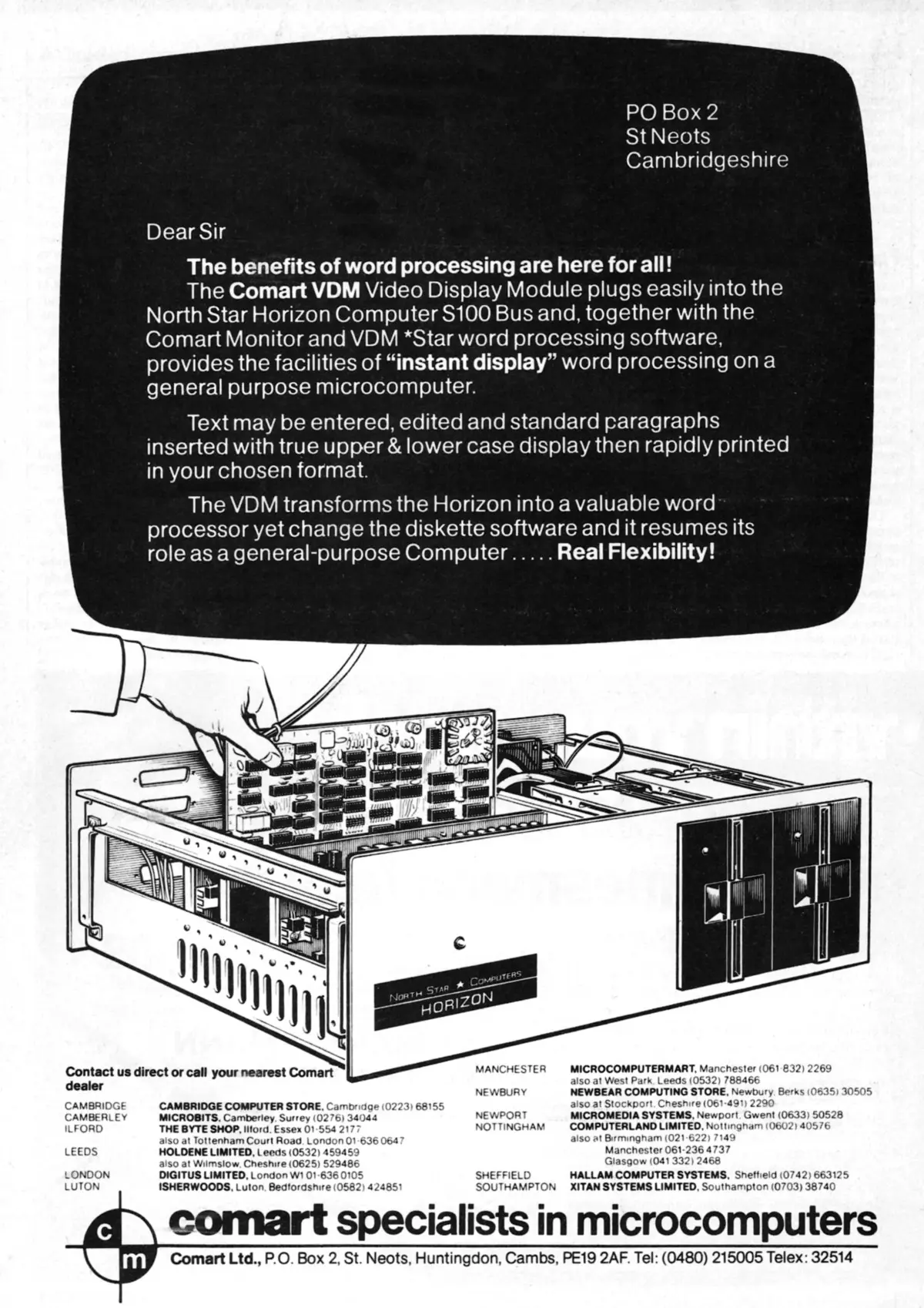
One of Comart's North Star Horizon boards - the Comart VDM display module, which included VDM *Star word processing software, so the machine could become an instant "word processor". From Practical Computing, January 1980
The Horizon was popular enough in the UK that its reseller - Comart - ended up branching out by building its own third-party plug-in boards for the machine, as apparently North Star's own were hard to come by in the UK.
Comart was still in this business at the beginning of 1980, when it released a plug-in "instant word processor" board - the Comart VDM Display Module, with the VDM *Star word-processing package.
North Star, meanwhile, continued into the 1980s and in the late summer of 1984 was nearly bought by well-funded Unix systems company Fortune, in a deal worth around $13.5 million[2], or about £38 million in 2025 money.
The Unix company had already lent North Star $3.75 million, which after the potential buyout failed was converted to a 19% stake in the company. North Star was eventually disolved in 1989[3].
Date created: 01 July 2012
Last updated: 18 October 2025
Hint: use left and right cursor keys to navigate between adverts.
Sources
Text and otherwise-uncredited photos © nosher.net 2025. Dollar/GBP conversions, where used, assume $1.50 to £1. "Now" prices are calculated dynamically using average RPI per year.
